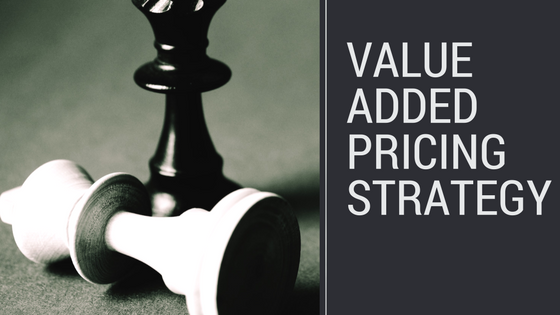
A small increase in your pricing structure can boost your profits, but the decision to do so requires prior planning.
———————
Pricing & Value-Add
There are different approaches to pricing your products and services. One effective method is value-added pricing. Here’s an example: If you make coffee and sell it in areas where it’s very cold, it potentially has more value than if you sell in a location where it’s extremely hot. The difference is the value. One group may be willing to pay more based on need, while the other group may opt out for a while because the need and value are not as high.
Value-add pricing is a strategy that looks away from all the specifics of pricing (such as the cost of production) and focuses on how your customers see your product/service, and how much they are willing to pay for it. It’s a strategy that can increase profits rather quickly, but there’s a technique to getting it right.
Simple Steps to Creating a
Value Added Pricing Strategy
———–
Value-added pricing requires doing some research; such as surveys, testing, and a fair amount of listening. You can’t just predict what your customers want based on your knowledge or calculations. Customers can only attach high value to products/services they see as beneficial to them. Take the smartphone for instance; most people prefer smartphones that have a great camera as opposed to high ROM (memory). A phone with higher ROM which usually provides better overall performance may not be valued as high as a phone that has a better camera but smaller ROM. So you have to consider not just the feature of your product and service, but the overall value your customers place on those features.
———–
-
Determine Market Value.
Have you done your research to determine how your product/service is priced in the market? This includes looking at competitor pricing, and the value they are giving their customers. Doing this helps you understand general consumer-behavior in your industry. This also helps you to understand the value your competitors have that you don’t and vice versa.
——–
-
Consider the Highest Price Point.
Conduct research to determine the price your customers are willing to pay for the value you give. What is the convenient price? At what point will they start murmuring when paying, (the price is high) but still worth it. Lastly, what is their breaking point (I’m not willing to pay that)?
———
-
Give Your Customers Value For Their Money.
You can’t sell a regular product/service at a higher rate and expect people to value it. You have to have a product or service that stands out above others. Once you understand what your customer values and have made the benefits of your product/service clear, they will then naturally be open to paying more.
——–
In summary, pricing based on value is effective when thought out and planned. You do have to commit to conducting customer research regularly as customers values will change over time.
Do you need more strategies for your business or organization?
Call 678-250-4192 to schedule a strategy session.

Yes! Finally someone writes about added value
of a product.